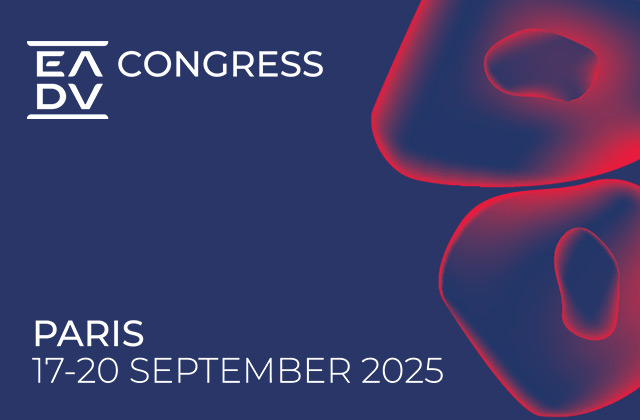
It’s a safe bet that anyone reading this article is familiar with the concept of an ecosystem. When we think of an ecosystem, we most often imagine how one exists in nature: a complex web of living organisms and non-living components (such as water, air, soil, rocks, and so on), all interacting with one another in a particular space.
When all of the components are in balance, the ecosystem is healthy and functions well. Because everything is so inter-linked, changes in one part of the ecosystem can impact other parts, for better or for worse. The key is that every animal, insect, bird, water droplet, mineral, etc. has a role to play within the greater whole. Interestingly, the concept of an ecosystem is highly applicable to rare disease markets.
Rare diseases (RDs) are different from more common ones, often presenting special challenges for patients, physicians, caregivers, payers, and pharma companies. Those differences and challenges are mostly a consequence of rarity (of patients, experts, data, resources, etc.) and the typically high disease burden. They have been well-described in our other resources, including a paper on the special commercial challenges in rare diseases, as well as a paper on the differences between RDs and more common “specialty” diseases and rare cancers.
Given those differences and challenges, how does a biopharma company succeed in this space? What must it do? This article is the first in a series that will dive into various aspects of rare diseases, providing insights that biopharma companies can use to maximize their chances of commercial success in RD markets.
Throughout this series, we’ll touch on topics across the development and commercialization life cycle. Here, we begin with a crucial first step: an understanding that RD markets are, in fact, complex ecosystems. These ecosystems contain a range of stakeholders, each of which has a role to play and distinct needs.
The needs of any one stakeholder group are highly connected to those of other stakeholders in the system. An action in one part of the ecosystem often has significant impacts across other parts. Any biopharma company that wants to succeed in such an ecosystem needs to determine what role(s) it should play, and how best to meet the needs of this complex web of stakeholders.
Strategic Vision and Why It’s Critical
No one should ever embark on a major project without clearly understanding what they want to accomplish. So, before exploring the RD ecosystem, it’s important to pause for a moment and outline why a clear strategic vision should be established as the foundation for decision making. This is important for any company, but it is most central to emerging companies with development-stage assets.
A company’s strategic vision should clearly articulate what it ultimately wants to be—and accomplish—in its marketplace. It should address a set of core questions, and two of the main ones are:
- Should we become a fully-integrated biopharma company?
- What are our key pipeline / portfolio priorities?
Should we become a fully-integrated biopharma company?
This is a fundamental question. Should a company build commercialization capabilities or should it just focus on the science…discovering and developing assets and then moving them to commercial markets through partners or out-licensing arrangements?
This question is not unique to RD companies, but it does have special implications for them. It can be easier for a smaller biotech to be a fully-integrated company in RDs because of the smaller environment; it’s easier (and necessary) to be agile.
However, RDs often require resources, services, and tools that go beyond the norm in more common disease states. Examples include “beyond the pill” offerings (such as patient support services spanning financial, logistical, and reimbursement needs), sophisticated high-touch field forces, and in-depth engagement with all key stakeholders in the RD ecosystem. So, commercializing in the RD market environment is more suited to smaller, more agile companies, but the demands of doing so could be more easily met by larger companies with more resources. Talk about a “Catch-22!”
At the end of the day, this decision should be driven by an understanding of the market and customer needs, the RD company’s own capabilities and objectives, and its pipeline opportunities (as we’ll see below). Developing internal RD commercial capabilities can require significant investments for an R&D-focused company, but it may be necessary to properly meet the needs of the market, as larger pharma companies are often not agile enough to provide “white glove” service to patients and customers, nor operate optimally in a non-traditional “high-touch” environment.
What are our key pipeline / portfolio priorities?
All companies need to carefully prioritize their portfolios based on the market opportunities, unmet needs, their ability to meet needs with a specific asset, and so on. However, for an RD company with a diverse portfolio, prioritizing one asset or disease state over others can have significant implications for those other, lower-priority assets in the portfolio.
While this is true for any company, this is particularly challenging in RDs because the diseases, markets, and customer types are so different from one another. For example, consider an oncology company with a broad portfolio. At the end of the day the assets are all still oncology drugs with broad similarities in patient types, customer types (e.g., oncologists), and customer needs.
By contrast, an RD company may have within its portfolio a range of diverse assets. Those assets may be for genetic diseases that affect children as well as adults, encompass neurological, muscular, gastrointestinal, and other types of diseases, all with diverse customer types and needs.
While we’ve considered both key questions separately above, it’s important to note that they are very much connected to one another. For example, an emerging biopharma company might be more likely to become fully integrated if it sees multiple commercial opportunities, (i.e., it has multiple assets in its portfolio or it has a single asset with strong potential in multiple indications). Conversely, it may be less likely to become fully integrated if it only has one promising asset in a single indication. So, the answer to one question can definitely impact the answer to the other.
Overall, the strategic vision will play the key role in determining how a company is designed and how it makes its investments. It truly is the foundation for everything that comes after.
A Look at the Rare Disease Ecosystem
To succeed in any RD market, a biopharma company has to adopt a rare disease mindset. A company can’t just sell product into a market. Instead, it must become an integrated member of the RD ecosystem, and be seen as driving positive change and adding value for all key stakeholders.
In developing any commercial strategy, an RD company must take these stakeholders—and their needs and perspectives—into account. Here, we provide a brief overview of the key stakeholder groups in most RD ecosystems:
- Patients
- Caregivers
- Healthcare Providers
- Patient Advocacy Groups
- Centers of Excellence / Key Opinion Leaders
- Payers
- Regulators
- Scientific Societies / Academia
Patients
Patients (and/or their caregivers) typically face significant challenges that relate not only to the severity of the disease, but also to its rarity. In some cases, children are born with a rare disease that has no effective treatment available. This can cause a sense of desperation and helplessness for a child’s parents or caregivers.
In many cases, patients have come through long and difficult journeys to a diagnosis, usually due to limited disease awareness among healthcare providers, limited public attention to the disease, a lack of clear diagnostic criteria, and more. Some patients never get to a diagnosis because of these challenges, which makes the need for disease awareness and education, diagnostic criteria, etc. even more acute.
Patients that do get to a diagnosis do a lot of their own research and often become experts in their own right. As a result, RD patients tend to be more empowered, playing a more active role in their own treatment decisions. The Doctor-Patient relationship is usually more collaborative than in more common diseases.
For biopharma companies, this often means that they, too must have a more collaborative relationship with patients. For example, it’s often important for patients to be involved in the clinical development process by providing input on relevant endpoints, sharing key insights on support needs that manufacturers can address, and in other ways. Biopharma companies may need to co-develop resources for patients to help them better engage with their physicians, and so on. In short, patients need to be viewed as active participants in the RD ecosystem, rather than passive “end users” for a therapeutic.
Caregivers
Like patients, caregivers should also be seen as active participants in the RD ecosystem. In some cases, their input is more critical than that of patients. Many rare diseases affect very young children, and their caregivers or parents are the ones doing the research, dealing with physicians, and more. Alternatively, some patients might be very elderly with cognitive issues, and their adult children may be the key points of engagement.
For any given RD, a biopharma company needs to truly understand the perspectives and “journeys” of the caregivers, as they could highlight the need for various “beyond the pill” services, counseling support, and more. Caregivers often face heavy physical and emotional burdens, and it’s not unusual for them to feel isolated. Biopharma companies have a role to play in supporting them.
Healthcare Providers
RD patient care often requires multidisciplinary care teams to manage patients and make decisions. Healthcare providers (HCPs) that are part of a multidisciplinary care team can encompass prescribing physicians, referring healthcare providers, and others. For example, physical therapists are very important in spinal muscular atrophy because they administer motor function tests; psychiatrists are important in Huntington’s Disease, as these patients often need their help and support to manage the psychiatric symptoms associated with disease progression.
In general, some key things to keep in mind regarding HCPs in RDs:
- There is often a higher need for disease education, as referring physicians may have very limited knowledge of any given RD and even specialists may see only a few cases in a career.
- Targeting and referral strategies are important, as a biopharma company may need to educate non-specialists so they can recognize a given RD and properly refer to the most appropriate expert or Center of Excellence (if one exists).
- In many cases, there’s a strong need to help HCPs establish appropriate diagnostic approaches and algorithms. Biopharma companies can play a meaningful role in supporting such an effort, helping patients and physicians, while simultaneously unlocking a therapy’s commercial opportunity.
- Rare disease therapies are often life-long treatments and/or are given to children. As a result, the overall risk/benefit profile is critically important, and prescribing physicians are often highly focused on assessing that. This is in contrast to a cancer treatment, for example, in which the therapy’s overall efficacy might be the dominant concern. Companies must work diligently to help articulate the holistic clinical value proposition to HCPs, including tools that will help physicians make informed decisions about the value of a given therapy to a specific patient.
Patient Advocacy Groups (PAGs)
In disease areas that have them, PAGs can be very influential regarding treatment protocols, helpful in pricing decisions, and more. Obviously, they are extremely important for patients. In most cases, resources for RD patients are very slim, so PAGs can be an instrumental part of providing education and support throughout the patient’s journey to diagnosis and treatment.
For a biopharma company, the key is to engage with PAGs in an open and honest effort to help patients and caregivers. This often means co-creating value-added products and other resources for patients, caregivers, HCPs, etc.
PAGs may also expect biopharma companies to invest in various “umbrella” support activities (e.g., newborn screening, investment in infrastructure, etc.) in order to demonstrate a clear long-term commitment to fighting the disease.
Not all RDs have a dedicated PAG. However, in those cases, organic patient communities (such as Facebook groups) can spring up. These patient- and caregiver-driven communities can serve as mechanisms for engagement and gathering input.
Centers of Excellence (COEs) / Key Opinion Leaders
Centers of Excellence, if they exist in a given disease state, are critical components in an RD ecosystem. In RDs without any COE, biopharma companies can potentially help establish them by identifying the capabilities needed in a COE, identifying potential sites that can serve as COEs, partnering with established and emerging Key Opinion Leaders (KOLs) in the RD, and helping provide the necessary education and resources to set up the required capabilities. Collaborating on clinical trial design and execution can be an important foundational step for an ongoing COE / KOL relationship.
Establishing a new COE (or studying existing ones) can help a biopharma company determine what “good looks like” for a COE in a specific disease area. Biopharma companies can analyze, identify, and document best practices, and then share the information with other non-COE facilities around the world. In this way, biopharma companies can help facilitate the development of additional COEs in the disease, as appropriate.
Payers
Payers are critical to the commercial success of nearly any biopharma therapy. However, with RDs they become even more important, as many RD therapies are quite expensive. There are a few implications for a biopharma company:
- Payers won’t typically know a lot about any given RD, so educating them regarding the disease, study endpoints and their relevance, and other key market considerations is important. Education is also key because payers might not see an RD treatment as a funding priority due to the low number of patients affected.
- It’s vital to understand how the payer determines “value” so that value propositions for payers will be relevant. Some payers can become too focused on the price of RD treatments, rather than the overall clinical and economic value they can provide. This is especially pronounced for gene therapy, where the cost is much higher compared to more “standard” RD treatments (e.g. Zolgensma [onasemnogene abeparvovec-xioi]), a gene therapy for SMA). This can also be a challenge with national payers that lack appropriate health technology assessment (HTA) frameworks to assess RD drugs.
- Payers increasingly expect post-marketing evidence to demonstrate long-term efficacy and safety. This is true for therapies in rare and in more common diseases. However, it presents special challenges in diseases where patient monitoring might have to continue for many years (as in Huntington’s disease) and/or in diseases where the natural history is not well characterized.
- Payers’ overall requirements in terms of endpoints and evidence can differ from those of regulators, which can lead to reimbursement delays or restrictions.
Because of the above challenges in educating payers on the disease and helping them understand the value, early engagement is critical.
Regulators
For rare diseases as well as more common ones, it’s always important to understand what will be relevant to regulators. For example, clinical endpoints must be appropriate to help ensure regulatory approval.
RDs are different however, because (like payers) regulators are likely to have limited familiarity with a given RD. Education and early engagement will be important. Also, clinical endpoints in some RDs are not well-defined, with an increasing push towards acceptance of biomarker-based endpoints. Therefore, early coordination with regulators is key to designing clinical trials that will be valid and properly support any application.
Related to this, various health authorities are asking for more natural history and retrospective data to understand the progression of many RDs. There is an opportunity for biopharma to collaborate with health authorities to develop and share such data.
Scientific Societies / Academia
An important piece of advice for biopharma companies is to avoid hubris: It’s entirely possible that, in a given RD, someone else has already done significant and useful research in the field (e.g., discovering the gene that is responsible for a given RD).
Often times, this work is done by academic researchers. A biopharma company must make itself aware of any academic research that has been done in its chosen disease area and engage as appropriate with the researchers who did it. Those individuals can become extremely helpful in the fight against a disease by acting as key opinion leaders, trial investigators, advisory board members, and more.
What’s Next?
Successful RD companies will meaningfully engage with all key stakeholder groups and account for their needs at each stage of the development and commercialization process. As this series of articles progresses, we’ll trace through the key stages, describing how stakeholders’ needs and perspectives are relevant, as well as some key success factors for biopharma companies.
The key areas we’ll cover are:
- Optimizing clinical trial design for RDs
- Creating life cycle and ongoing evidence generation plans
- Effectively implementing RD clinical programs
- Working with payers and communicating value
- Becoming an integrated member of the RD ecosystem
Throughout, we’ll also discuss the likely impacts of COVID-19 on all of this. While the COVID-19 pandemic is not going to be with us forever (we hope!), it will have lasting effects on healthcare, including the way physicians and patients interact with one another, as well as how biopharma companies interact with all stakeholders in a given “ecosystem.” Some of those effects will be acute and near-term, while others will become permanent. We’ll explore both.







